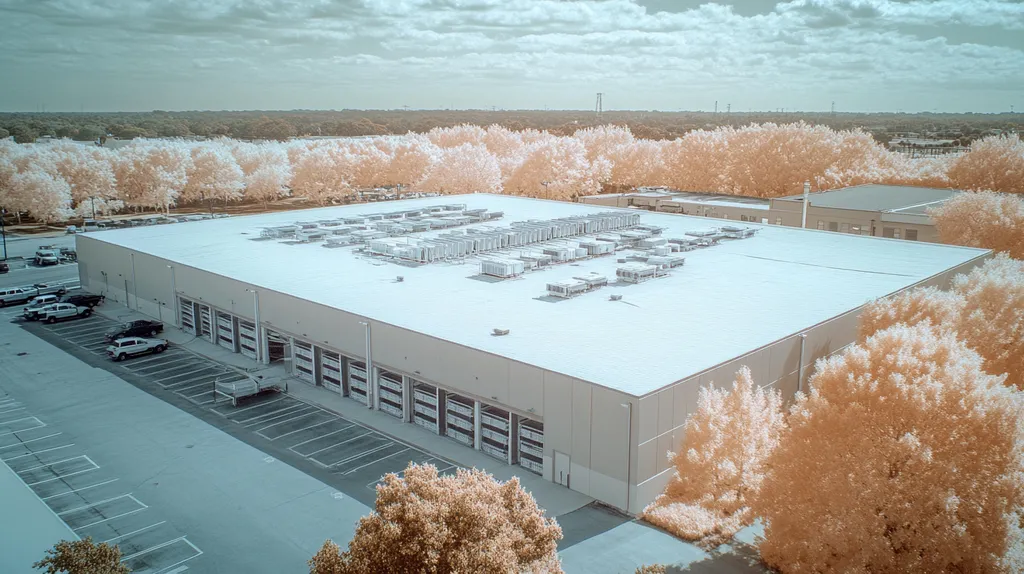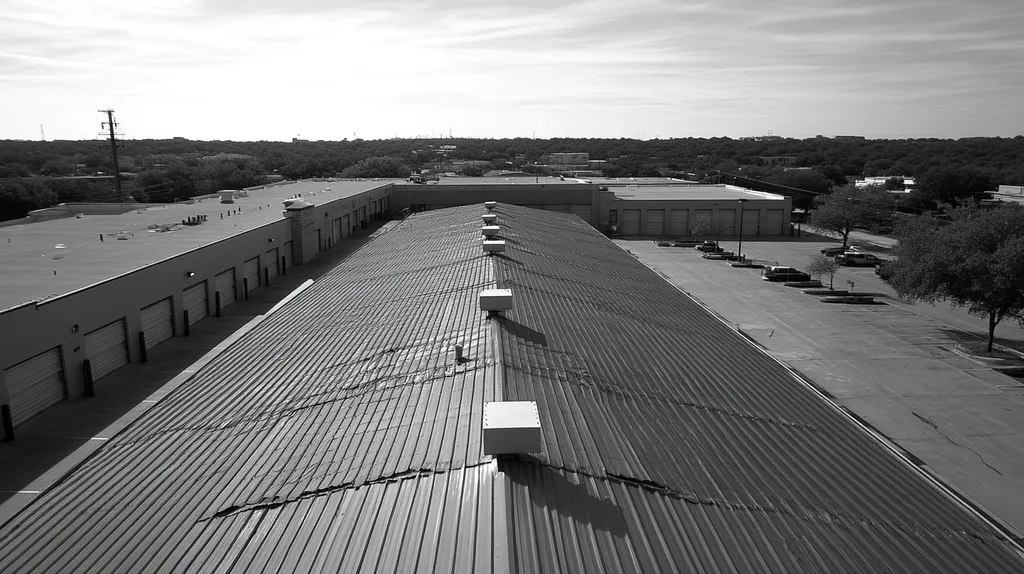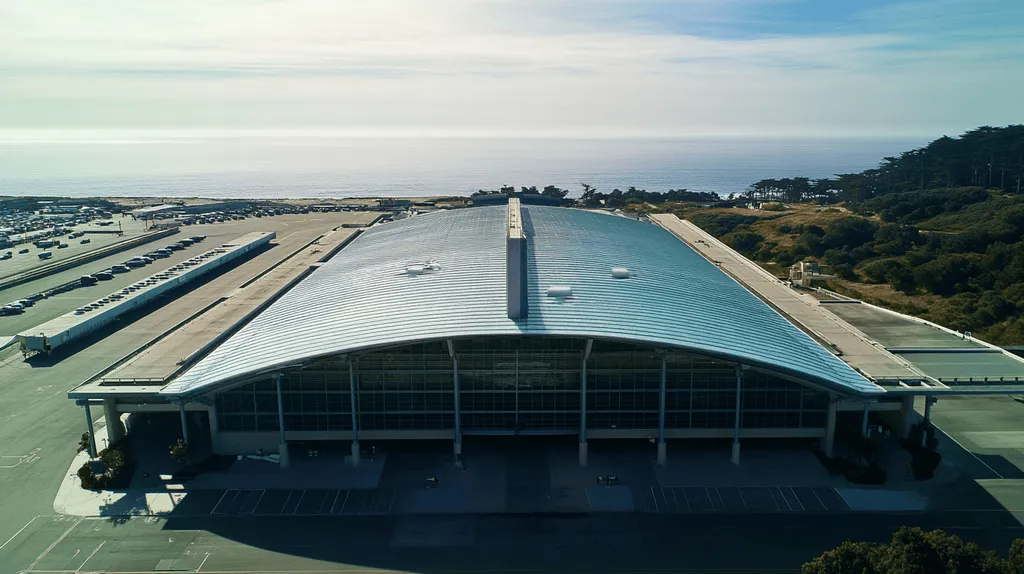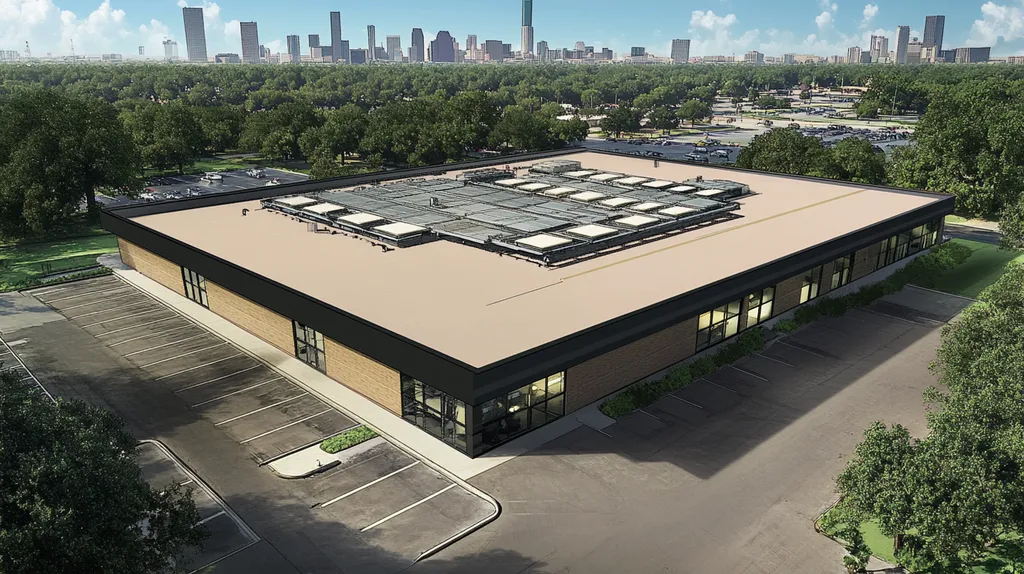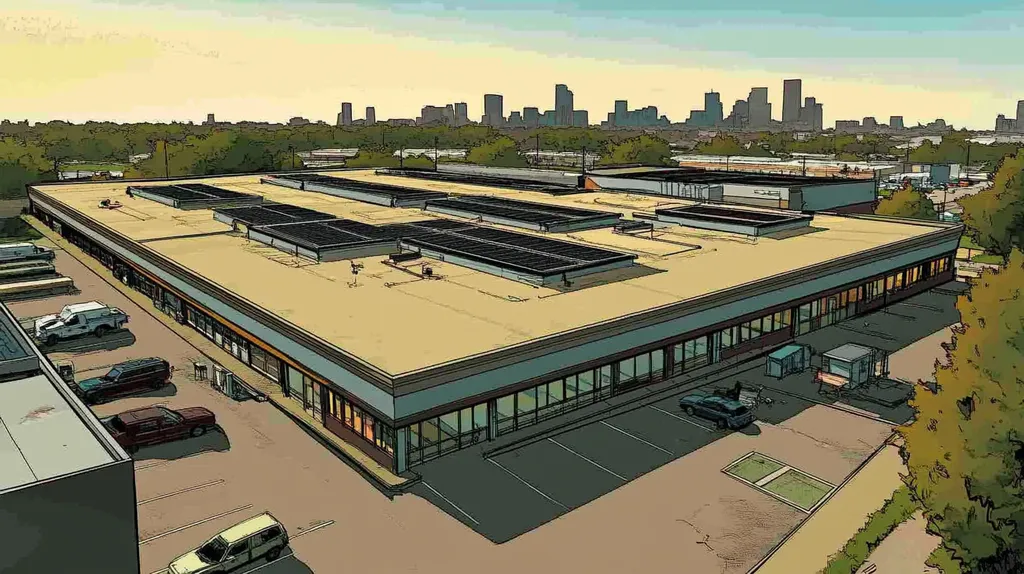With commercial roofing costs rising 15% annually and over 60% of building owners facing imminent roof replacement decisions, calculating ROI for coating solutions has become a critical financial imperative.
Recent industry data shows that properly implemented roof coating projects can reduce lifecycle costs by up to 50% while extending roof service life by 15-20 years, yet many facility managers lack the analytical framework to evaluate these opportunities effectively.
This comprehensive guide examines the essential components of coating ROI analysis, from fundamental economic principles through advanced optimization strategies, providing property owners with actionable methods for maximizing returns on coating investments.
SECTION 1: FUNDAMENTAL CONCEPTS
The commercial roofing industry faces a critical inflection point as aging infrastructure meets rising energy costs. Recent data shows that over 60% of commercial buildings have roofs more than 15 years old, creating urgent decisions about replacement versus restoration. Roof coatings present a compelling alternative, offering potential lifecycle cost reductions of 50% compared to full replacement. Understanding the fundamental concepts behind coating ROI enables informed, strategic decisions that impact both immediate budgets and long-term facility value.
Defining ROI in Commercial Roof Coatings
ROI calculations for roof coatings require a comprehensive evaluation of both initial investments and long-term returns. The basic formula takes the existing equity in the roofing asset and divides it by the total costs of purchasing and maintaining the coating system. (source: Commercial Real Estate Loans)
Key variables in the ROI equation include material costs, labor expenses, and preparation requirements. These factors must be weighed against projected savings from avoided replacement, reduced maintenance needs, and enhanced energy efficiency.
ROI calculations should also incorporate indirect benefits such as extended roof life, improved tenant comfort, and reduced operational disruptions. These elements contribute significant value beyond pure financial returns.
Accurate ROI assessment requires detailed documentation of both current roofing conditions and anticipated performance improvements. This data-driven approach ensures reliable projections for stakeholder decision-making.
Key Economic Benefits of Roof Coatings
Energy cost reduction stands as a primary economic advantage of roof coating systems. Modern coating technologies can reduce peak roof temperatures by up to 65°F, translating to cooling cost savings of 20-40% annually.
Preservation of existing roofing assets delivers substantial financial benefits through deferred replacement costs. Coatings can extend functional roof life by 10-15 years, allowing organizations to redirect capital to other priorities.
Maintenance cost reductions represent another significant economic benefit. Properly applied coatings minimize leak repairs, reduce UV degradation, and protect against environmental damage that typically demands ongoing maintenance attention.
Tax advantages and utility incentives further enhance the economic appeal of coating solutions. Many jurisdictions offer accelerated depreciation or energy efficiency rebates for reflective coating installations.
Understanding Lifecycle Cost Analysis
Lifecycle Cost Analysis examines total expenditures across the complete service life of roofing systems. This methodology captures initial application costs, maintenance requirements, energy impacts, and eventual restoration or replacement needs.
The analysis must incorporate regional climate factors, building use patterns, and energy rate projections. These variables significantly influence coating performance and ultimately determine the true cost-benefit ratio.
Labor costs throughout the coating lifecycle require careful consideration. While initial application expenses may be higher than traditional repairs, reduced maintenance requirements often deliver substantial long-term savings.
Environmental factors also impact lifecycle calculations. Extended roof life through coating application reduces landfill waste and associated disposal costs, while reflective properties contribute to reduced carbon emissions through energy savings.
Quality of installation directly affects lifecycle performance. Professional application following manufacturer specifications ensures maximum durability and optimal return on the coating investment.
SECTION 2: SYSTEM COMPONENTS
The selection and implementation of roofing system components directly impacts both short-term performance and long-term return on investment. Recent industry data indicates that over 40% of commercial roof coating failures stem from improper material selection or deficient installation practices. With material costs rising sharply across the construction sector, the stakes for making informed system choices have never been higher.
Types of Roof Coating Materials and Properties
Modern coating technologies offer diverse solutions tailored to specific commercial roofing challenges. The primary categories include acrylic, silicone, polyurethane, and modified bitumen-based materials, each engineered for distinct performance characteristics.
Acrylic coatings excel in UV resistance and provide excellent reflectivity, typically reducing roof surface temperatures by 50-60 degrees Fahrenheit. These water-based formulations offer strong adhesion to most substrates while maintaining flexibility across temperature variations.
Silicone systems demonstrate superior waterproofing capabilities and exceptional resistance to ponding water. Their molecular structure enables unprecedented durability against weathering, though initial costs typically exceed other options.
Metal roofing materials and specialized metal roof coatings continue gaining market share, driven by their enhanced durability and energy efficiency benefits, despite recent material cost increases and tariff impacts. (source: New Tech Machinery)
Substrate Preparation and Compatibility Considerations
Proper substrate preparation represents the foundation of coating system success. Surface cleanliness, moisture content, and structural integrity must meet manufacturer specifications to achieve optimal adhesion and performance.
Material compatibility testing proves essential when applying new coatings over existing roof surfaces. Chemical interactions between incompatible materials can trigger premature degradation or complete system failure.
Environmental conditions during preparation significantly impact coating success. Temperature, humidity, and dew point measurements must fall within acceptable ranges throughout the preparation process.
Surface profile requirements vary by coating type and manufacturer specifications. Mechanical preparation methods must achieve the proper profile without compromising substrate integrity.
Application Techniques Affecting Performance
Application methodology directly influences coating system longevity and effectiveness. Proper mil thickness, uniform coverage, and appropriate cure times form the cornerstone of successful installations.
Equipment selection and maintenance play crucial roles in application quality. Spray systems, rollers, and brushes must match coating viscosity and desired finish characteristics.
Weather conditions during application demand careful monitoring and documentation. Wind speed, ambient temperature, and relative humidity affect both application techniques and curing processes.
Quality control measures throughout the application process ensure specification compliance. Regular mil thickness measurements, adhesion testing, and visual inspections validate proper installation procedures.
SECTION 3: IMPLEMENTATION METHODS
Implementation methods for commercial roof coatings represent a critical inflection point where planning meets execution. Industry data shows that over 30% of coating failures stem from improper implementation rather than material defects. The stakes are particularly high given rising material and labor costs, with proper implementation directly impacting both immediate performance and long-term ROI. Success requires rigorous attention to assessment protocols, application procedures, and integration with broader facility goals.
Assessing Existing Roof Conditions for Coating Suitability
Comprehensive roof assessment begins with non-destructive moisture scanning using infrared thermography and nuclear testing methods. These technologies identify subsurface moisture that could compromise coating adhesion and performance.
Core sampling provides critical data about existing roof composition and structural integrity. Analysis must include membrane condition, insulation saturation levels, and deck integrity to ensure the substrate can support a coating system.
A strategic lifecycle economic analysis reveals whether coating applications align with facility objectives and budgetary constraints. This evaluation encompasses current conditions, projected performance improvements, and anticipated maintenance requirements. (source: SmartSeal)
Adhesion testing on representative roof areas validates coating compatibility with existing substrates. These tests must follow ASTM standards and manufacturer protocols to ensure reliable results.
Step-by-Step Roof Coating Application Process
Surface preparation requirements vary by substrate type but always demand thorough cleaning and priming. Power washing with appropriate cleaners removes containments while maintaining surface integrity.
Seam reinforcement and detail work precede main coating application. Critical areas receive additional attention through specialized taping and reinforcement fabrics.
Base coat application must achieve uniform thickness according to manufacturer specifications. Proper mil gauge readings during application ensure adequate material distribution.
Top coat installation timing depends on base coat cure rates and environmental conditions. Quality control measures include wet film thickness testing and visual inspection for proper coverage.
Final inspection protocols document completed work and verify compliance with project specifications. This documentation supports warranty requirements and establishes baseline conditions for future maintenance.
Integrating Roof Coatings with Energy Efficiency Goals
Energy performance baselines established through pre-coating monitoring enable accurate tracking of efficiency improvements. Data collection should include interior temperatures, HVAC loads, and utility costs.
Coating selection criteria must align with facility energy objectives. Solar reflectance index (SRI) values directly impact cooling load reductions and potential utility savings.
Integration with building automation systems optimizes coating performance benefits. Real-time monitoring enables rapid response to changing conditions and validates energy savings.
Documentation of energy improvements supports utility rebate applications and environmental compliance reporting. These records demonstrate ROI while building the case for future sustainability initiatives.
SECTION 4: MAINTENANCE REQUIREMENTS
Maintenance represents the critical difference between realizing optimal ROI and premature coating failure for commercial roofs. Industry data shows that up to 80% of roof coating failures stem from inadequate maintenance rather than material defects. With average replacement costs exceeding $12 per square foot, proper maintenance protocols become essential for protecting the substantial investment in coating systems and maximizing long-term returns.
Routine Inspection Protocols for Coated Roofs
Systematic inspection protocols form the foundation of effective coating maintenance. Visual assessments should occur quarterly, with detailed technical evaluations conducted semi-annually to document coating condition, adhesion stability, and surface deterioration.
Digital documentation through high-resolution imagery and thermal scanning provides quantifiable data for tracking coating performance. These records enable trend analysis and help justify maintenance expenditures through demonstrated cost avoidance.
Moisture detection using non-destructive testing equipment identifies potential problems before visible damage occurs. Regular monitoring of seams, penetrations, and drainage systems prevents water infiltration that could compromise coating integrity.
Weather event inspections following severe storms or extreme temperature fluctuations help identify acute damage requiring immediate attention. This proactive approach prevents minor issues from escalating into systemic failures.
Common Repair Techniques and Their Impact on ROI
Addressing coating defects requires careful selection of compatible repair materials and methods. Surface preparation standards must match or exceed original installation specifications to ensure proper adhesion and performance.
Spot repairs using reinforced coating applications effectively address localized damage while preserving surrounding areas. This targeted approach optimizes material usage and labor efficiency while maintaining system integrity.
A life cycle cost analysis validates repair decisions by comparing immediate intervention costs against delayed maintenance scenarios. These calculations inform strategic choices between spot repairs and more extensive restoration efforts. (source: Damschroder Roofing)
Quality control measures during repairs ensure consistent material application and proper cure times. Documentation of repair methodologies supports warranty compliance and establishes performance benchmarks.
Extending Roof Life Through Preventive Maintenance
Preventive maintenance programs incorporate scheduled cleaning, drainage maintenance, and coating rejuvenation. Regular removal of debris and contaminants prevents chemical degradation and maintains reflective properties.
Annual recoating of high-stress areas extends system longevity while minimizing full replacement requirements. These targeted applications focus resources on zones experiencing accelerated wear or environmental exposure.
Integration with facility maintenance systems ensures proper timing and resource allocation. Automated scheduling and documentation improve compliance while reducing administrative overhead.
Staff training programs ensure maintenance personnel understand coating system requirements and can identify potential issues early. This knowledge base supports rapid response to emerging problems and maintains system performance.
SECTION 5: PERFORMANCE METRICS
Performance metrics drive critical decisions in commercial roofing, where every percentage point of efficiency translates to substantial cost impacts. Recent industry analysis shows that properly coated roofs can reduce cooling costs by up to 35% while extending roof life by 15-20 years. Yet many facility managers lack the comprehensive metrics needed to validate these investments, leading to missed opportunities for significant operational savings.
Measuring Energy Savings from Reflective Coatings
Energy efficiency metrics require systematic documentation of pre-coating and post-coating performance. Baseline measurements should include interior temperature readings, HVAC runtime data, and peak demand periods across multiple seasons.
Thermal imaging and surface temperature monitoring provide quantifiable data on coating effectiveness. Regular measurements taken at consistent times and conditions enable accurate trending of performance improvements.
Energy savings calculations must account for regional climate variations and seasonal usage patterns. Performance metrics from similar facilities in comparable climate zones offer valuable benchmarking data.
Calculating the return on investment for roofing installations requires comprehensive measurement of direct energy savings, along with evaluation of auxiliary benefits like reduced HVAC strain and improved occupant comfort. (source: Polo)
Evaluating Durability and Weather Resistance
Durability metrics focus on coating integrity through exposure to environmental stressors. Key performance indicators include adhesion strength, flexibility retention, and resistance to UV degradation.
Weather resistance testing must incorporate both standard and extreme condition scenarios. Accelerated aging protocols help predict long-term performance under varying environmental conditions.
Surface deterioration measurements track changes in coating thickness, reflectivity, and membrane integrity. Regular documentation of these metrics enables early identification of potential failure points.
Impact resistance and tensile strength testing validate coating performance under mechanical stress. These measurements ensure the coating maintains protective capabilities throughout its service life.
Tracking Maintenance Cost Reductions Over Time
Maintenance metrics begin with detailed documentation of pre-coating repair frequency and costs. This baseline enables accurate calculation of post-coating maintenance savings.
Labor hour tracking provides concrete data on maintenance efficiency improvements. Reduced repair time directly impacts operational costs and facility disruption.
Material consumption records demonstrate coating impact on repair requirements. Tracking quantities and types of repair materials validates long-term cost reductions.
Service call frequency analysis reveals patterns in maintenance needs. Declining intervention requirements indicate successful coating performance and validate ROI projections.
Warranty claim tracking provides additional performance validation. Reduced warranty utilization demonstrates coating effectiveness in preventing systemic failures.
SECTION 6: OPTIMIZATION STRATEGIES
Commercial property owners face mounting pressure to maximize returns on every facility investment. Recent market analysis reveals that roof coating projects lacking comprehensive optimization strategies achieve 40% lower ROI compared to well-planned implementations. With material costs rising an average of 15% annually, the stakes for strategic coating selection and deployment have never been higher. Understanding key optimization approaches enables property owners to capture maximum value while avoiding common pitfalls that erode returns.
Leveraging Tax Incentives and Rebates for Coatings
Federal and state programs offer substantial financial incentives for energy-efficient roof coating installations. Section 179D deductions can offset up to $1.88 per square foot for qualifying commercial projects, while local utility programs frequently provide additional rebates.
Documentation requirements demand careful attention during project planning. Energy performance modeling, certified inspections, and detailed cost tracking ensure qualification for maximum incentive capture.
Strategic timing of coating installations can optimize tax benefit realization. Projects completed within specific fiscal periods may qualify for accelerated depreciation or enhanced deduction opportunities.
Multi-year incentive planning enables phased implementations that maximize available benefits. This approach allows organizations to spread investments while maintaining consistent tax advantages.
Using Advanced Coating Technologies to Maximize ROI
Modern coating formulations incorporate nano-materials and advanced polymers that dramatically enhance performance metrics. These technologies deliver superior UV resistance while extending service life up to 25% compared to conventional materials.
Spray polyurethane foam (SPF) systems demonstrate exceptional insulation properties and energy efficiency gains through reduced thermal transfer. This technology’s comprehensive approach to building envelope protection delivers substantial operational cost reductions over time. (source: Polo)
Smart coating systems with embedded monitoring capabilities enable predictive maintenance. Real-time performance data helps prevent failures while optimizing maintenance schedules.
Advanced application methods utilizing robotic systems ensure consistent coverage and minimal material waste. This precision approach reduces labor costs while improving quality control.
Aligning Coating Selection with Facility Operational Goals
Operational requirements significantly influence optimal coating selection. Facilities with high cooling demands benefit most from highly reflective formulations, while manufacturing environments may prioritize chemical resistance.
Building use patterns impact coating performance expectations. Facilities with frequent roof access require enhanced durability, while those with minimal traffic can prioritize other performance characteristics.
Future facility modifications must factor into current coating decisions. Planned equipment installations, solar projects, or expansions may dictate specific coating compatibility requirements.
Integration with existing building management systems optimizes coating performance monitoring. Automated alerts and performance tracking ensure rapid response to emerging issues while validating ROI projections.
The Bottom Line
With commercial roofing costs projected to rise 25% by 2025, implementing effective coating solutions has become a critical financial imperative for property owners and facility managers.
The data clearly demonstrates that strategically planned coating projects can reduce lifecycle costs by 50% while extending roof service life up to 20 years.
Success requires rigorous attention to material selection, proper installation protocols, and ongoing maintenance programs supported by comprehensive performance metrics.
Organizations that leverage available tax incentives, embrace advanced coating technologies, and align systems with operational goals consistently achieve ROI figures 40% higher than industry averages.
As building operating costs continue climbing, roof coating investments represent one of the most impactful opportunities for long-term value creation in commercial property management.
FREQUENTLY ASKED QUESTIONS
Q. What is ROI in relation to commercial roof coatings?
A. ROI refers to the returns generated from investing in roof coatings. It evaluates both initial costs and long-term savings, helping property owners make informed decisions about their roofing needs.
Q. What types of materials are used for commercial roof coatings?
A. Common materials for commercial roof coatings include acrylic, silicone, polyurethane, and modified bitumen. Each material serves specific performance needs such as UV resistance and waterproofing capabilities.
Q. How should I assess my commercial roof for coating suitability?
A. Proper assessment includes non-destructive moisture scanning and core sampling. Evaluate the roof’s structural integrity and existing materials to ensure compatibility with the proposed coating system.
Q. What maintenance is required for coated commercial roofs?
A. Regular inspections are crucial for coated roofs, with visual checks quarterly and detailed evaluations biannually. This helps identify issues early and prolongs the roof’s lifespan, maximizing ROI.
Q. How can I measure the energy savings from a roof coating?
A. Measure energy savings by documenting HVAC performance and utility costs before and after coating installation. Regular thermal imaging can help quantify improvements in energy efficiency and cooling costs.
Q. What optimization strategies can improve roof coating ROI?
A. Utilize tax incentives and select advanced coating technologies to enhance performance and efficiency. Phased installation planning allows for capturing maximum benefits and improving overall ROI.
Q. How can environmental factors impact coating performance?
A. Environmental factors like climate and weather conditions significantly influence coating performance. Proper assessment and selection based on these factors can enhance durability and extend the functional lifespan of the roof.

